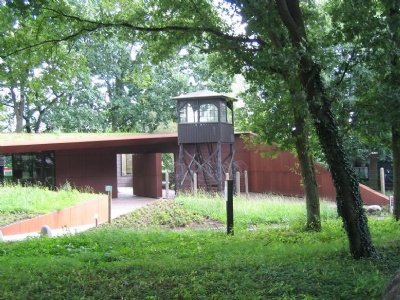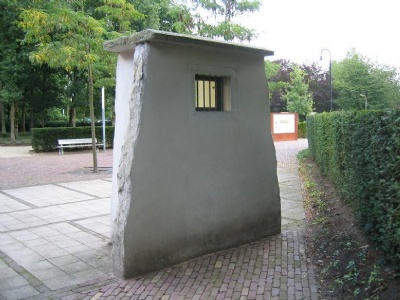Amersfoort
Kamp Amersfoort was until 1941 a military camp when it was taken over by the German Security Service, SD. From then on the Camp was called Polizeiliches Durchgangslager Amersfoort. The Camp was a transit camp for prisoners who were to be transported from one camp to another camp. Despite this, the prisoners were forced to work in different workshops and industries. In 1943 the camp was extended and the prisoners had to be transported to Vught. The camp existed until 1945 when it was handed over to the Red Cross. Most of the prisoners were men of Dutch nationality. Until the expansion in 1943, about 8,800 prisoners were imprioned in the camp, of which 2,200 were sent to Germany. During the second period, a total of about 26,500 of which about 18,000 were sent to the eastern areas occupied by the Germans. In total, there were about 35,000 prisoners in Amersfoort during its two periods. At least 658 prisoners died in Amersfoort, 428 of whom were murdered by a firing squad. Other prisoners died of torture and diseases where typhoid was common. Amersfoort, like others, had a penalty bunker (22 cells) for prisoners who for one reason or another were considered dangerous or had violated the camp rules.
Current status: Demolished with museum (2007).
Address: Loes van Overeemlaan 19, 3832 RZ Leusden.
Get there: Car.
Follow up in books: Kogon, Eugen: The Theory and Practice of Hell: The German Concentration Camps and the System Behind Them (2006).




After the war, the camp was demolished and the only physical objects left in their original location are the foundations of a watchtower and morgue. The museum is not big but since it opened only in the 2000s it is very modern. The memorial at the execution site was established already in 1953.